Painting tools, musical instruments, and desktop computers. When junior high school, parents will always choose one or two of them to cultivate their children’s interests.
In recent years, with the development of artificial intelligence, robots have entered the mainstream consumer market from the exclusive playthings of a few people, and educational robots have gradually become a new choice other than the “oldest home teaching aids.”
But as you know, today’s educational robots are often more gimmick than reality, maybe not as good as Siri. However, it is time for such an idea to change after truly understanding the Mecha Master S1 (ie, the DJI car).
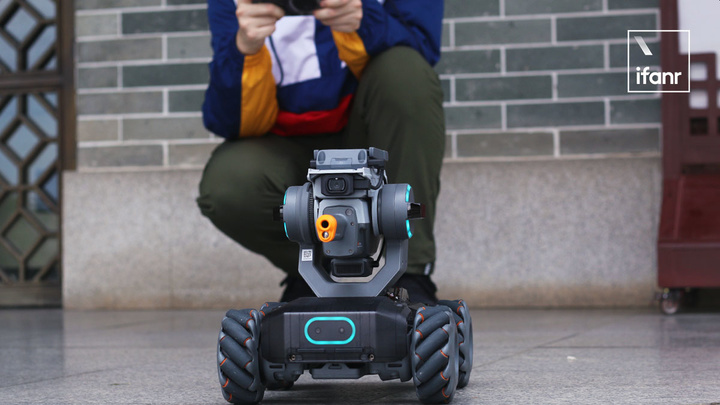
Last June, we have done a full evaluation on DJI cars, and today, we will use DJI Many opportunities have been added for education, and a more in-depth experience around the “programming education” attribute of the car.
Get started: 30 programming cards
Still starting with assembly. Even though the level of integration is quite high, there are detailed illustrations of 74 steps in the manual, which is still not an “easy” process.
A variety of professional mechanical components, not even a screw. But because of this, even if you complete a Mecanum wheel, you can easily get a sense of accomplishment.
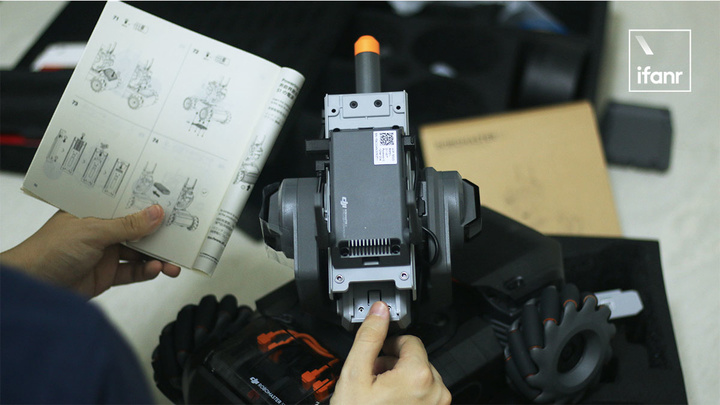
About 4 hours, the assembly is completed. After everything is ready, the DJI car can start “stand-alone driving” under the control of computer software or mobile phone App “RoboMaster”, and realize the movement with FPV (first-person perspective) , Aiming launch, taking pictures and videos, locking pedestrian tracking and other functions.
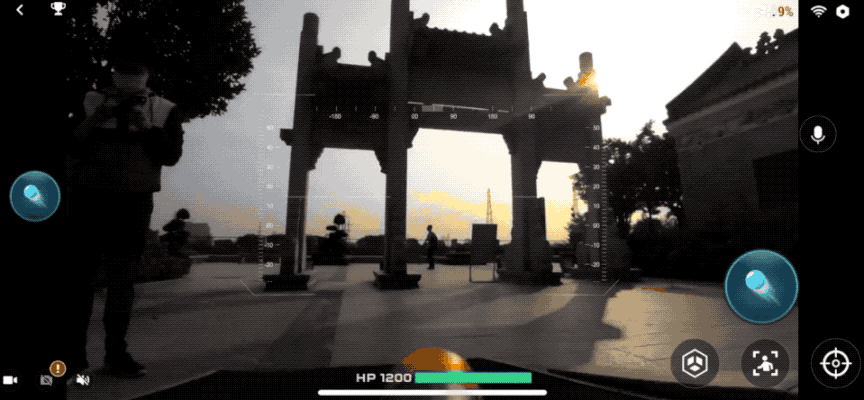
▲ Stand-alone driving demo
Of course, there is only driving operation. The DJI car is just a well-made “remote control tank”, and it is not a “robot”. It is the biggest surprise to support Python and Scratch programming to implement instructions.
For this, DJI has prepared comprehensive and vivid programming guidance, including supporting programming environments and recently released programming cards.
The programming card is a brand new set of gamification programming cards. It consists of a programming guide card and 30 programming challenge cards. Each programming card is a simple and interesting small project, including surround sweep, ten Continuous shooting, playing the piano, etc., users can guide their thinking with information such as color, shape, text, front and back codes.
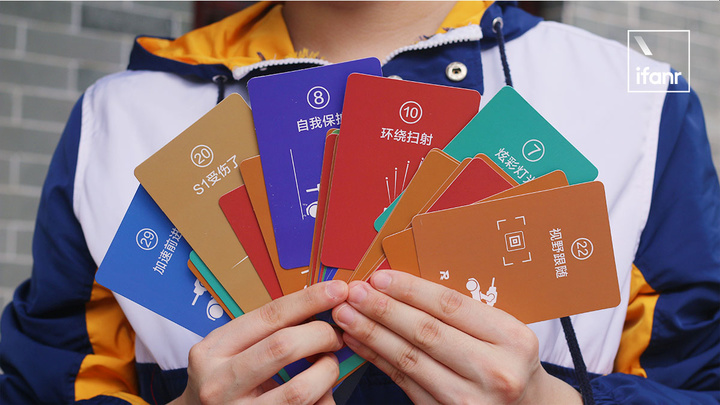
Tightly combine physics and mathematics knowledge, and integrate the knowledge from books into a robot at your fingertips. Even people who are not familiar with programming can be in “Lab> My Program” in “RoboMaster” App. Get started easily with “building blocks”.
Take the most basic “take a square” as an example, which involves mathematical knowledge such as square, direction, and angle, as well as programming knowledge such as chassis control and sequential structure. In 10 minutes, elementary school students can also complete a simple task and infiltrate knowledge during the challenge.
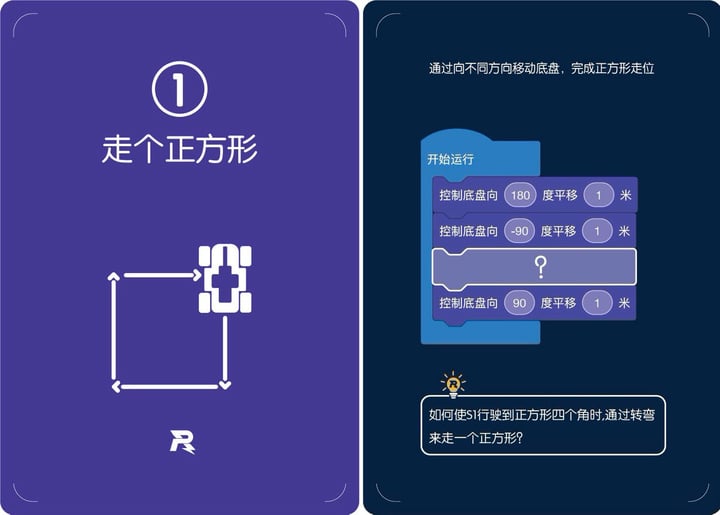
▲ Take a square
Another example is the 9th move “Return Carbine”. This card mission requires the DJI car to pan the chassis forward, and at the same time the gimbal shoots behind the chassis. According to the programming challenge card, in the “RoboMaster” App, first find the category of each block with the same color, and then dragMove the corresponding modules to the script area, and then arrange them in order.
Because each technology has been packaged into a convenient programming API, during the programming process, the program can be run at any time, allowing the DJI car to complete the actions under the existing instructions, which is convenient for viewing the results in time.

▲ In “Lab”, complete the script according to the “Carbine” programming card
Interestingly, at the bottom of each programming card, DJI has also added a “little thinking” link to help users expand their thinking, create more gameplay, and learn programming knowledge while quickly gaining happiness and achievement.
In the “Carbine” programming challenge card, there is a question mark building block, combined with the “how to let the launcher continuously launch water bombs” problem in “Small Thinking”, you can come up with 2 solutions:
1. Grab the “launcher” keyword and replace the “single shot water bomb” with the “continuous shot water bomb” under the corresponding category;

2. Grab the “continuous” keyword, and under the “control sentence” category, coat a “always” loop module to “single shot of water bombs” to achieve the same effect of “single shot of water bombs”.

Following the programming card to implement a few simple operations, such as clapping and nodding, S-shaped backwards, in the Scratch script area, my colleagues in the liberal arts have already been able to mix and match actions, and also arranged a “Sing back and sing while accelerating forward” Talent show.
At present, this set of cards can be downloaded for free on DJI’s official website. New purchasers will also receive a physical card package for free.
Not only are the modules diverse, you must know that the DJI car contains 31 sensors, 6 artificial intelligence modules, 46 programmable components, and DJI’s leading technologies such as gimbal and image transmission. Each wheel motor and each block The impact detection sensors under the armor are all independently installed, and the number of controllable parts means that if you want, you can create countless combinations.

Traditional education is a very time-delayed affair. You may often hear that “the bench is cold for ten years” when you are young. You always have to work hard on your studies today, and you have to wait a few months or even years to give it. Positive feedback. For students, their patience and self-control are inherently inferior to adults. It is more or less inconsistent to let children sit and study at desks.
The “programming challenge card” concept of PBL (item-based learning) is exactly what traditional education lacks. One of its main characteristics is short and fast. Students can learn quickly in ten minutes, show their results to parents or teachers, and get instant feedback.
Since the 1950s, the West began to explore the concept of PBL. It is based on driving questions. Students explore driving problems in a real situation, and in the process of inquiry learning and applying subject ideas, teachers and students need to find solutions in a cooperative form so that learning is hidden The knowledge behind the problem and the ability to improve it. Finally, students create a set of workable products that solve the problem.
This kind of education has created the golden generation in the history of science, that is, a very special group in the history of science, known as Martians (Martians). They received elementary and secondary education in Hungary, then went on to university education around the world, and finally many people moved to the United States.
Including John Harsanyi of the Nobel Prize in Economics, Leo Szilard, the earliest promoter of the Manhattan Project, Teller, the father of the hydrogen bomb, the courage to build a roam to Mars, andVon Karman, founder of JPL, the Jet Power Labs of the odd Mars, etc., so that some people joked that Hungary is the front line of the Martians on Earth, giving these people extraterrestrial technology.
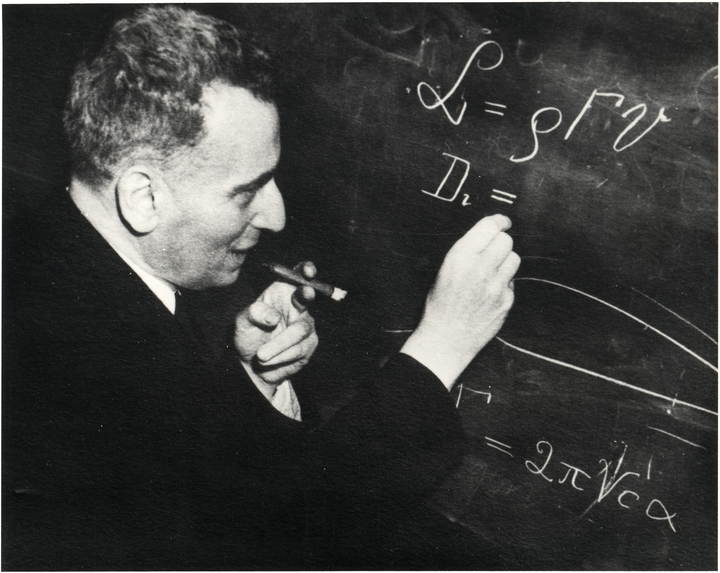
▲ Von Karman, founder of JPL, Jet Power Labs
What kind of education has achieved such great results? Von Karman’s evaluation of his father was:
My father believes that education should be integrated into everyday life, whether it is teaching Latin or mathematics or history. When learning Latin, students walk around the city to observe and copy Latin inscriptions that appear in museums and sculptures. When studying mathematics, students need to collect wheat production in Hungary, make calculations, and draw charts. So we didn’t waste time to memorize formulas at all, but we derived them by ourselves. Is there a better way to train scientists?
Of course, it is impossible for DJI cars to replace traditional classrooms and teachers and let children learn by themselves. But this kind of problem-oriented, encouraging initiative to acquire knowledge and rapid incentives provides more possibilities for education. No need to study textbooks or even start from the basic grammar of programming languages. The “technique” is weakened, which leads to a more organized “thinking”.
Advanced: “Master’s Way” in the laboratory
After getting started, you can enter the new world of “Laboratory> Master’s Road” and start training.
If the programming card brings an understanding of basic single boxing, the master’s road is to teach a set of “combination boxing”, and most of them come from the actual combat techniques accumulated in the RoboMaster Mecha Masters’ five seasons.
After the novice guidance, subsequent drift and flick, visual label follow, line follow-up, etc., each project-based tutorial involves multiple types of knowledge points, increasing in difficulty, taking you gradually to the best, improving the knowledge network and skills system.
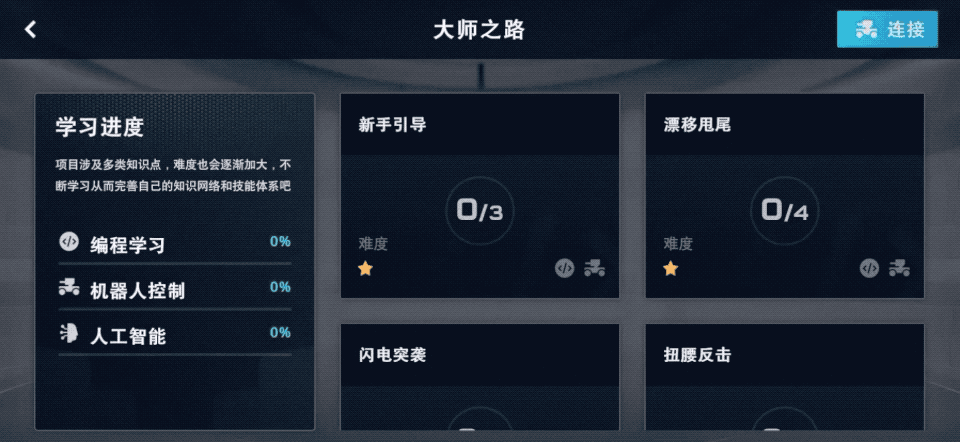
The programming card is “know its nature”, the master’s road is more about “know its nature”. Unlike rote-memory, duck-duck courses, the DJI Trolley Lab’s courses are more open and creative. Through the analysis of application scenarios, task processes, and knowledge points, a project is divided into different links.
Take the “Waistback Counterattack” in the Master’s Road as an example. This set of actions is based on the 2016 “RoboMaster Mecha Masters” South China University of Technology “South China Tigers” “tactical twisting waist to avoid enemy ballistics” technology as prototype The purpose is to rotate the robot’s chassis and gimbal in opposite directions, thereby reducing the probability of the robot being attacked.
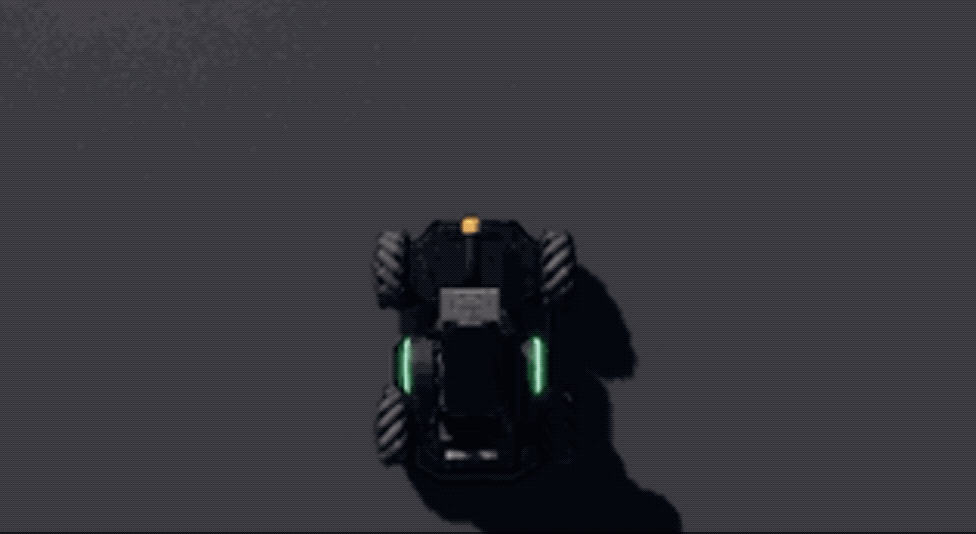
▲ Schematic diagram of “waistback counterattack”
It seems to be complicated. Actually, it has been decomposed into two parts: “chassis movement” and “twisting movement” in the master’s road. Each link also focuses on the goals, steps, required knowledge points, programming guidance, and attention points. The detailed descriptions of various aspects such as the realization effect, etc. were made, among which there are vivid schematic diagrams of abstract structures, flowcharts, and moving images.
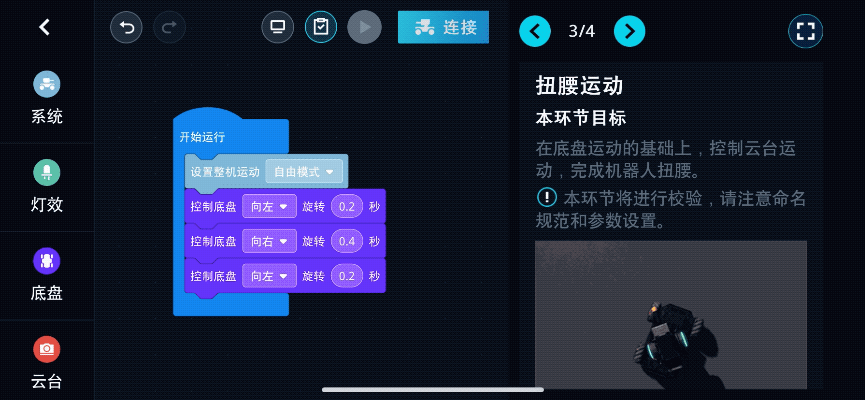
Just as each programming card has “mind thinking”, each lesson of Master’s Road also has a “reward level” as an after-school extension, which will guide the integration of the learned “combination boxing” into the actual battle scene, instead of being limited For code snippet execution.
It is worth mentioning that as the course deepens and covers a wider range of knowledge, you may also be able to integrate the knowledge that you have not figured out in four years of college.
For example, “Using PID control”Automatically follow the system”. For college students majoring in automation and electronics, this concept is no stranger, but it is not easy to master and apply.
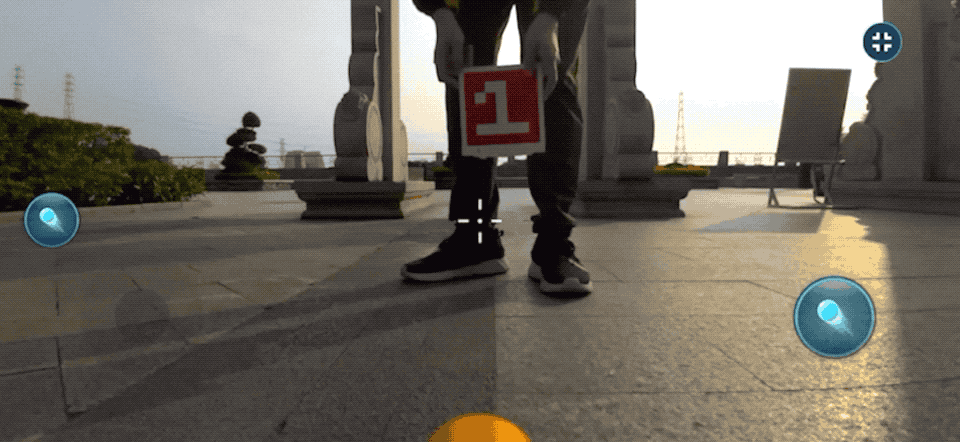
▲ The visual tag follows the demo, card 1 is the “visual tag”
DJI Car is a good teaching aid.
In the “Visual Tag Follow” project, you can learn what P control, PI control, PD control, and PID control are through diagrams. You can also directly debug feedback control by improving the accuracy of the gimbal’s aiming and optimizing the following effect. .
Education and fun, encouraging students to get rid of the restrictions of textbooks and textbooks and take the initiative to acquire more scientific knowledge is undoubtedly a more efficient learning method.
Advanced: combat and expansion
Scratch alone is certainly not enough. In fact, the RoboMaster App can also compile Python to achieve more complex operations.
Python is an easy-to-use scripting language with a simple and clear syntax, a rich and powerful class library, and a wide range of applications. It is suitable for both novices and learners of other programming languages to get started quickly.
In Lab> My Program, Scratch and Python can click the <|> symbol in the upper right corner at any time to switch, which is convenient for understanding the code against the effect of each module; it can also be written directly through the Python editor. However, Python is much more difficult to learn than Scratch, and language learning requires more exploration.
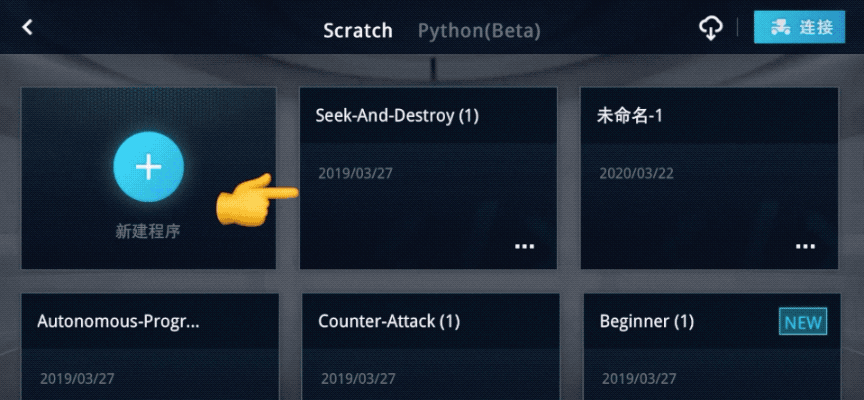
▲ Two ways to learn Python
In addition to typing the code yourself, sharing or using other people’s programs is also one of DJI’s extended gameplay.
DJI Community Mecha Master Discussion Forum Open source routines are available for learning, including letting DJI trolleys hit the gopher , “https://bbs.dji.com/thread-230437-1-1.html”>Become an alarm clock, identify Yu Qian Guo Degang , etc.

▲ DJI community user “bakedkids” designed by bakedkids. DJI trolleys have 6 hit detection sensors. When the sensor lights up, hit the corresponding armor. If you hit the correct gimbal, you will “nod your head”. p>
Several empty interfaces reserved in the rear part can also be extended for accessories.
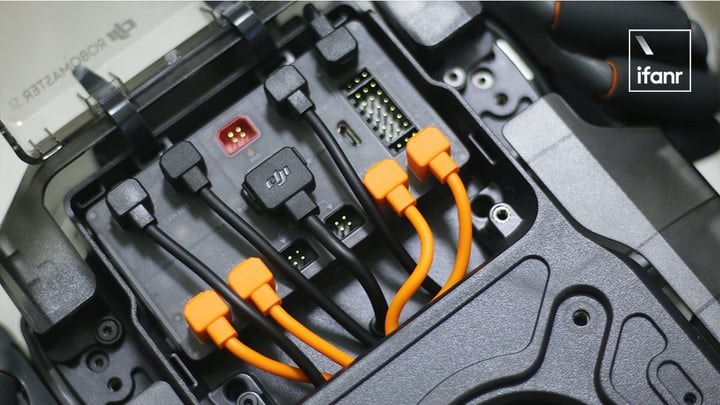
For example, set a robot claw , add a writing robot arm, Using Logitech wireless keyboard and mouse to connect mobile phones to control DJI cars and transform them into disinfection robots.
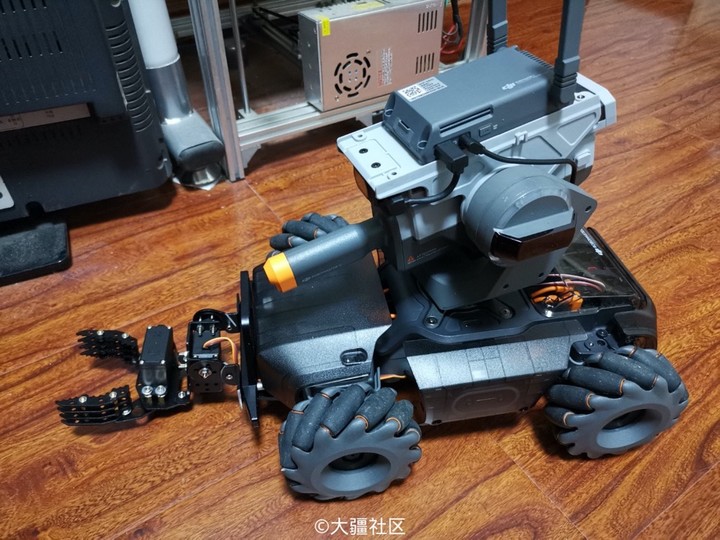
▲ DJI community users Gray machine 呦 Installed a mechanical claw on the DJI car to grab objects
Single-machine driving is not fun enough, and multiplayer competition with friends is more fun.
DJI has a special “setting”, which can calculate the attack value based on the damage in the physical world, and display the life value in real time, thus laying the foundation for “combat”. This is possible It is also the only robot that combines the fun of esports with the learning of theoretical knowledge.
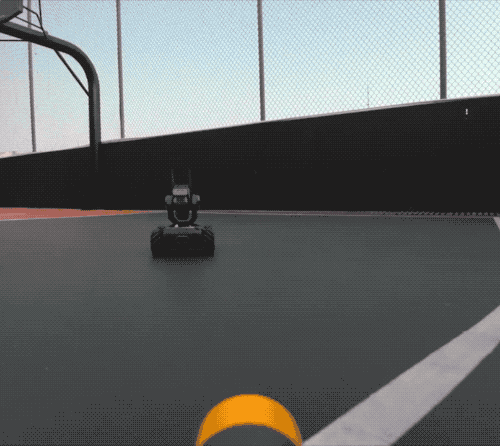
A multi-player competition is a robot competition. DJI ’s “RoboMaster College Student Robot Contest” has been held for 5 consecutive years and has now become one of the world’s largest robotics events. But the age does not meet the requirements, and a group without a suitable teammate will often become a hurdle, leaving many robot enthusiasts unavailable to participate.
Just a few days ago, we got a message: DJI has opened up a new soil for ordinary users and will hold the “Mecha Master Masters Challenge”. There is no restriction on the age of registration and professional background, and anyone who wants to experience robotics can participate. You can draw 2 friends or family to form a team, or let DJI match the right teammate for you.
The threshold is low and the rules are very simple. Similar to the glory of the king, the National Challenge directly uses the conquest mode of the DJI car: players will operate a robot to scan “visual tags” in a 6m x 9m field. Occupy a stronghold. The first team to occupy 4 strongholds will win the game.
In such a game, players need to cooperate, cover, design tactics and customize skills. If the players’ brains are big enough, they can turn the car into a “spy”, release the program skills, and pretend to be their opponent’s team by programming the color of their lights, thereby stealing the stronghold.
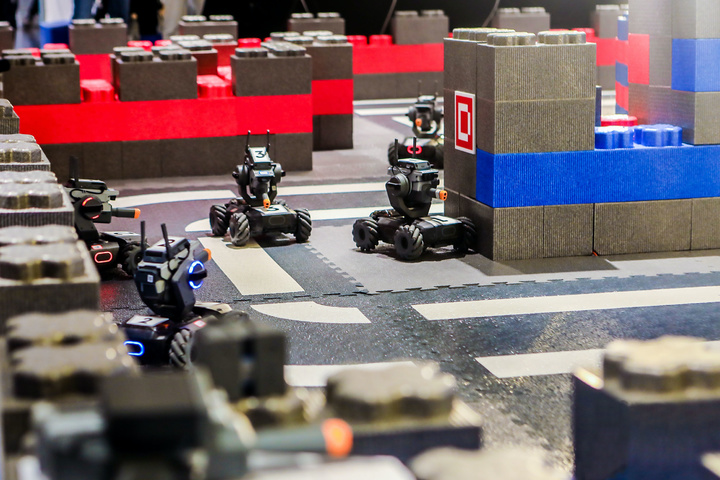
▲ The D tag in the picture represents a stronghold
DJI revealed that this brand new robot event will be the first to land in Beijing, Shanghai, Guangzhou, and Shenzhen in 2020, and then be promoted to many cities such as Nanjing, Hangzhou, and Chengdu.
Combining with events is a “Mecha Masters Club” program. The “Mecha Masters Club” officially authorized by DJI will also land in Shanghai and Shenzhen in the near future. This club will provide “points”, “match training” and “qualifiers” services. As long as users who are interested in robots and drones, they can experience DJI cars in the club, receive training, and finally participate in events.
Support for a variety of innovative gameplay, and implement the mecha master team’s deep understanding of science and technology education: free, open, learning and testing in practice.
Summary
Education is a slow industry, and DJI understands it.
Daily held a college student robot summer camp from 2013, a RoboMaster mecha masters tournament from 2015, a high school summer camp from 2016, and a high school winter camp from 2017, DJI has been Directly teaching to front-line students, accumulating enough teaching experience.
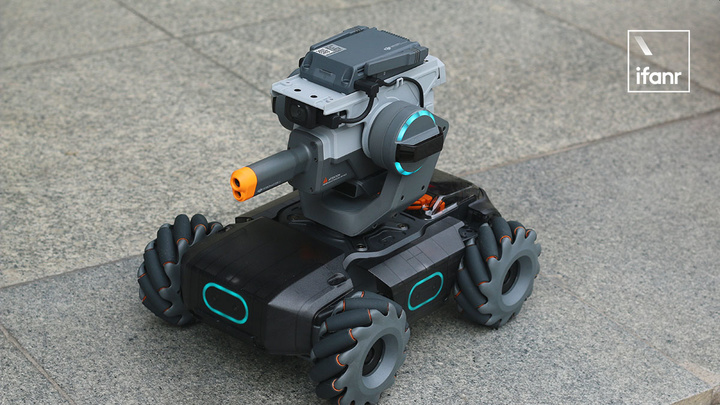
In fact, right hereIn 2017, the Mecha Master S1 project has begun to hatch, but it has been patiently polished for two and a half years, and it was not officially released until 2019.
Including programming cards specially launched for DJI cars, as well as the National Challenges and Clubs to be held, these measures have demonstrated DJI’s determination to deepen its education. What touched me a lot was the letter that the Mecha Master S1 team wrote to the first users last year, from which you can feel their awe and respect for this matter, and the ardent hope placed on the DJI car:
It should first be a real “robot”, with the hardware and functions that a robot should have;
Secondly, it should have depth and expandable space, so that users can tirelessly “drum up” and study;
It should be a carrier for transmitting knowledge, which can teach physics, mathematics, and robotics in a simple way;
Finally, it’s cool enough and fun enough to be attractive to modern people in the virtual world that catches the eye, and pulls them back into the real world.
I think it’s done well.
